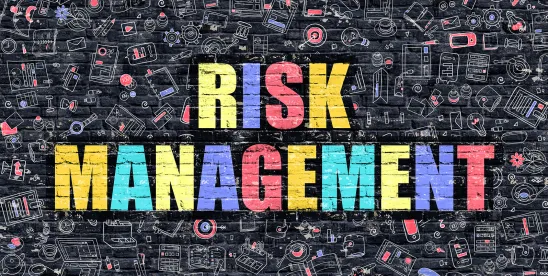Introduction
Risk management is a critical component of any successful business strategy. It involves identifying, assessing, and mitigating potential threats that could adversely affect an organization’s operations, assets, or reputation. These risks can be financial, operational, legal, or strategic in nature. By implementing effective risk management practices, businesses can safeguard their interests and ensure long-term stability.
What Is Risk Management?
Risk management is the systematic process of identifying potential risks, evaluating their likelihood and impact, and developing strategies to address them. This proactive approach enables businesses to minimize potential losses and capitalize on opportunities. As Brenda Wells, an expert in risk management emphasizes, risk management isn’t just about reacting to problems; it’s about planning ahead to prevent them.
Major Focus Areas in Risk Management
Risk management involves multiple dimensions, each critical to the overall success and resilience of an organization. Addressing these areas holistically can help businesses maintain operational efficiency and financial security. Effective risk management encompasses several key areas:
- Operational Risks: These pertain to disruptions in day-to-day business activities, such as supply chain interruptions, equipment failures, or human errors. Managing operational risks involves implementing robust internal controls and contingency plans to maintain business continuity.
- Financial Risks: These involve uncertainties related to financial markets, including interest rate fluctuations, credit risks, and liquidity challenges. Businesses must monitor their financial exposures and employ strategies like diversification and hedging to mitigate these risks.
- Legal and Compliance Risks: Organizations must adhere to various laws and regulations pertinent to their industry. Non-compliance can lead to legal penalties and reputational damage. Regular compliance audits and staying updated with regulatory changes are essential practices.
- Cybersecurity Risks: In today’s digital age, cyber threats such as data breaches and theft of intellectual property (IP) are prevalent. Alex Sharpe, a cybersecurity expert, warns that many businesses underestimate their exposure to cyber risks, but a single incident can cripple a company financially and erode customer trust. Implementing robust cybersecurity measures and employee training can mitigate these risks. In today’s hyper-connected world, we can no longer only look at ourselves. We also need to look at third parties we depend upon.
- Reputational Risks: These arise from negative public perceptions due to poor customer service, product failures, or unethical practices. Maintaining transparency, ethical operations, and effective communication strategies are vital to protecting a company’s reputation.
Key Legal and Financial Terms in Risk Management
Understanding specific legal and financial terms is crucial for effective risk management. These terms often occur when discussing mitigating risks and ensuring regulatory compliance:
- Derivatives: Financial instruments whose value is derived from underlying assets like stocks, bonds, or commodities. They are commonly used for hedging financial risks.
- Directors and Officers (D&O) Liability Insurance: This insurance provides coverage to company leaders against claims arising from alleged wrongful acts in their managerial capacity.
- Third-Party Risk Management (TPRM): Involves assessing and managing risks associated with external entities that a business engages with, such as suppliers or service providers.
- Compliance Program: A structured set of internal policies and procedures implemented by a company to ensure adherence to laws, regulations, and ethical standards. A robust compliance program helps in identifying regulatory risks and implementing measures to mitigate them.
The Role of Insurance in Risk Management
Insurance is a fundamental tool in transferring risk. Sue Myers, a seasoned expert in risk and insurance, emphasizes the need for strategic planning in risk management. By obtaining appropriate insurance coverage, businesses can protect themselves against significant financial losses resulting from unforeseen events. However, as David Pooser points out, “insurance transfers risk, but it doesn’t eliminate it. A solid risk management plan includes prevention and mitigation strategies.” Therefore, while insurance provides a safety net, it should be complemented with proactive risk mitigation efforts.
Selecting the Right Insurance Agent/Broker
An insurance agent or broker plays a pivotal role in a company’s risk management strategy. A knowledgeable agent can help identify potential coverage gaps and ensure that the business is adequately protected. Reid Peterson advises business owners to seek agents who possess a deep understanding of their specific industry and can offer tailored recommendations. He encourages businesses to think of their insurance agent as part of their advisory team, just like a lawyer or accountant.
Building a Comprehensive Business Advisory Team
A multidisciplinary advisory team enhances a company’s ability to manage risks effectively. Key members should include:
- Attorney: Handles legal matters, ensures regulatory compliance, and manages potential litigation.
- Accountant: Oversees financial health, conducts audits, and advises on tax-related issues.
- Insurance Agent: Assesses risk exposures and recommends appropriate insurance solutions.
- Cybersecurity Expert: Develops strategies to protect against digital threats and ensures data integrity.
This collaborative approach ensures that all potential risks are identified and managed comprehensively.
Common Risk Management Pitfalls
Businesses often encounter challenges in their risk management efforts. Common risk management pitfalls include:
- Neglecting Regular Updates: As businesses evolve, so do their risk exposures. It’s crucial to regularly review and update risk management strategies and insurance coverages to align with current operations.
- Overlooking Cybersecurity: With the increasing reliance on digital systems, neglecting cybersecurity can leave businesses vulnerable to costly data breaches.
- Lack of Crisis Management Plans: Many companies fail to prepare for potential crises, which can lead to disorganized responses and increased financial losses.
- Failure to Review Contracts: Poorly drafted contracts can expose businesses to unnecessary legal and financial risks. Having legal professionals review agreements can prevent future disputes.
Final Thoughts
Risk management is an essential part of running a successful business. By taking a proactive approach — identifying risks, developing mitigation strategies, and working with the right advisors — businesses can protect themselves from costly disruptions. As Brenda Wells emphasizes, risk management isn’t about avoiding all risks — it’s about being prepared for them.
To learn more about this topic view Corporate Risk Management / Corporate Risk Management Basics. The quoted remarks referenced in this article were made either during this webinar or shortly thereafter during post-webinar interviews with the panelists. Readers may also be interested to read other articles about managing business risks.
This article was originally published here.
©2025. DailyDACTM, LLC d/b/a/ Financial PoiseTM. This article is subject to the disclaimers found here.




 />i
/>i

